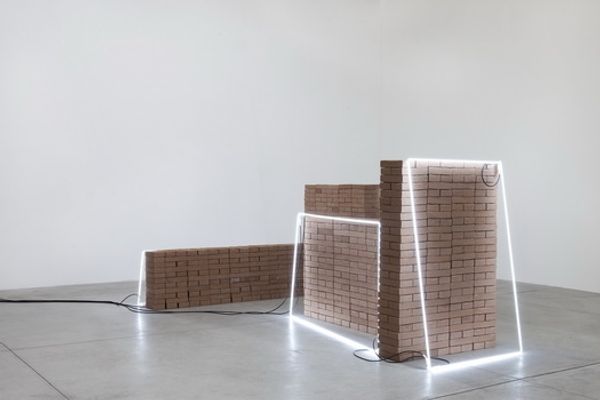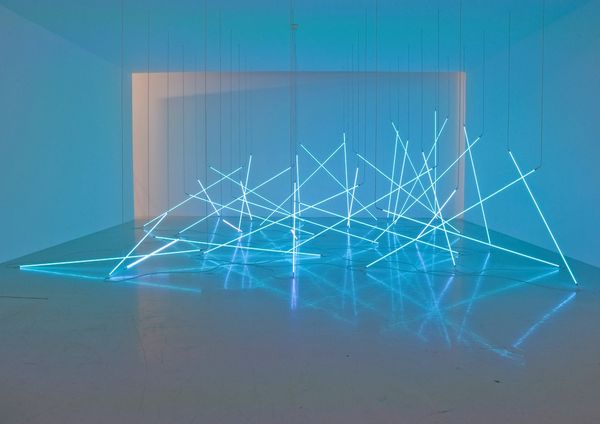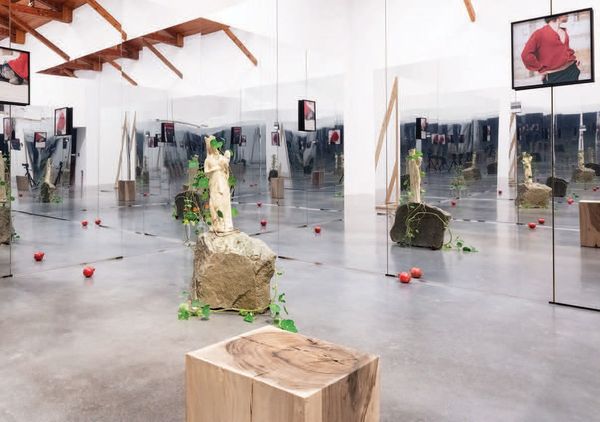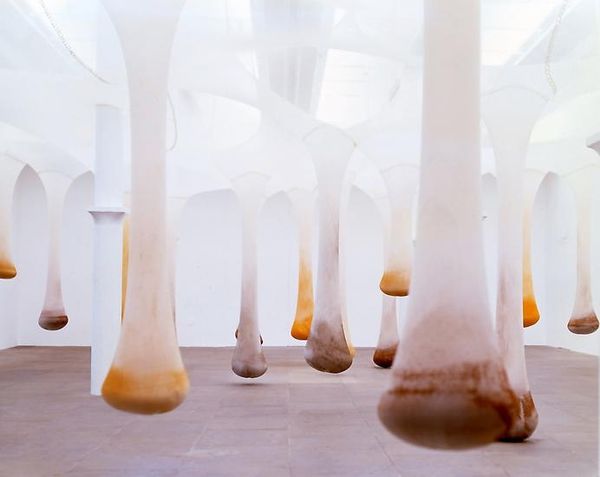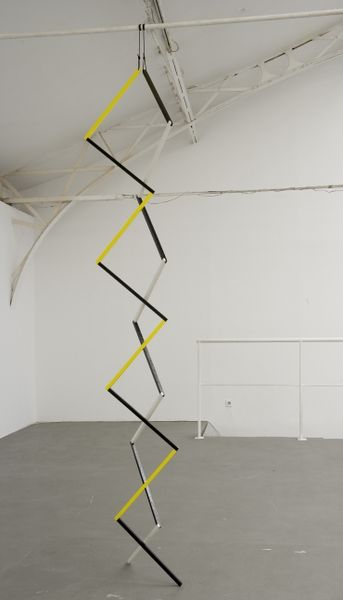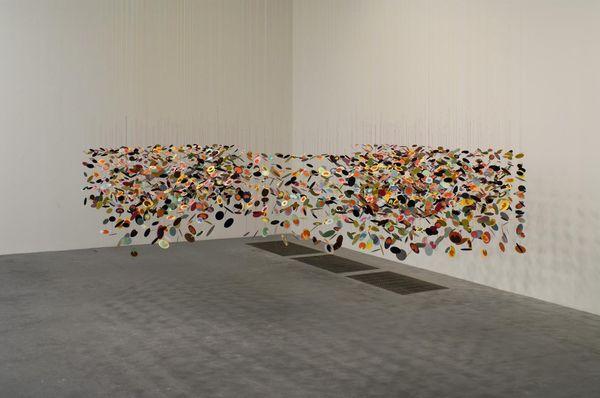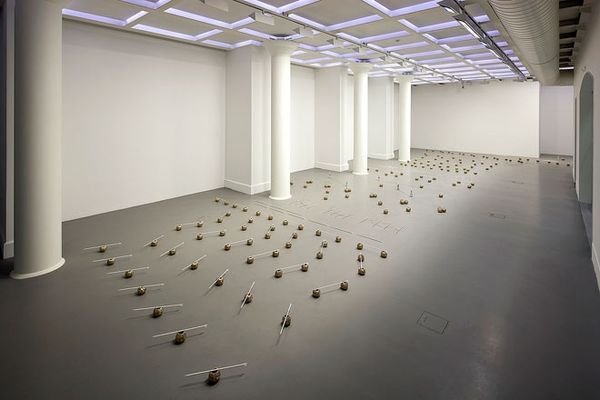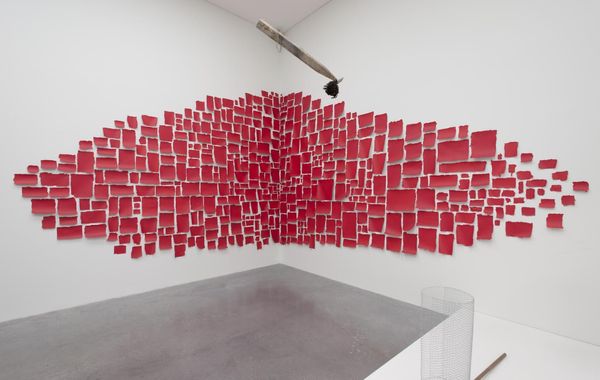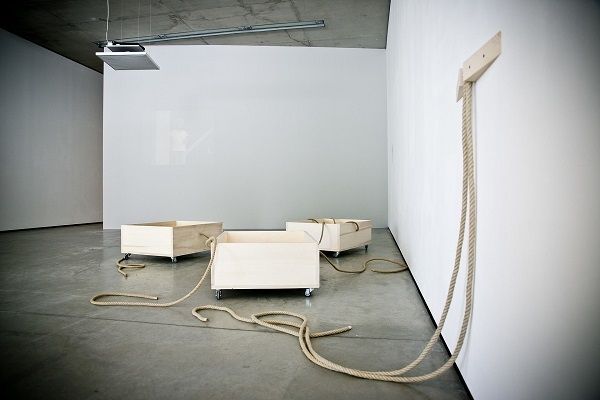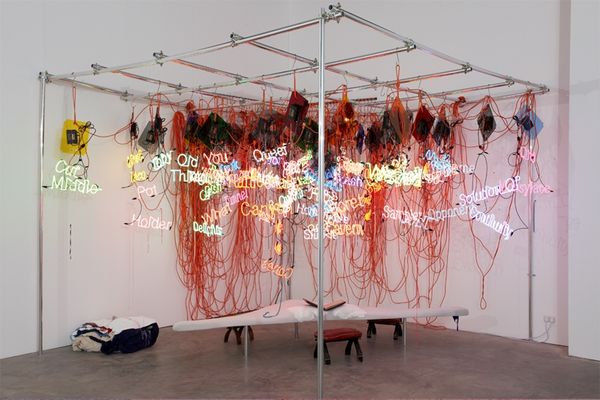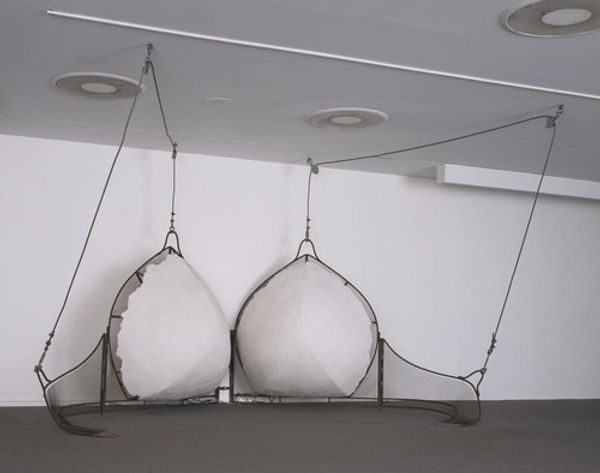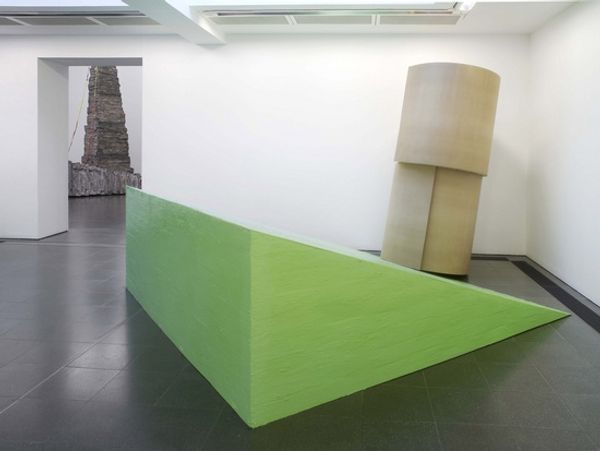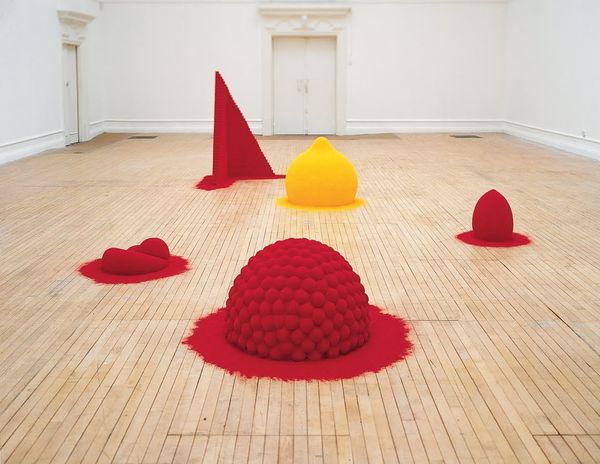
Copyright: Lita Albuquerque,Fair Use
Curator: Standing before us is Lita Albuquerque's "Axis Mundi" from 1981. This piece is a fascinating example of site-specific installation art, using mixed media elements. What strikes you first about it? Editor: The towers are visually striking. They seem to spiral upwards, like attempts at constructing impossible stairways or inverted ziggurats. There’s an ethereal quality to it, a lightness despite the materials, it seems to create a liminal, sacred space within the gallery. Curator: Albuquerque's work frequently delves into the spiritual, drawing on ancient myths and symbols. The "Axis Mundi" concept itself, found in numerous cultures, represents a point connecting heaven and earth. The use of geometric abstraction invites viewers to consider universal, primordial forms. Do you find the artist’s intentions come through? Editor: Absolutely. I think the work speaks to the potential for transformation, for moving beyond limitations imposed by our world. But who has access to that world, I wonder? Are these geometric shapes culturally neutral, or do they carry inherent biases based on the cultures from which those shapes arose? I also feel the artist asks what it means to define sacred space, in what might normally be considered a decidedly un-sacred space: an art gallery? Curator: It's crucial to acknowledge that no symbol exists in a vacuum; it always has historical and cultural roots. But "Axis Mundi," for me, transcends such concerns due to Albuquerque’s material and tonal approach. Editor: I also interpret the upward movement of the towers as commentary on power structures and systems of knowledge. As well as potential, where does this aspiration towards some elevated point take us? And is it necessarily a good place? What histories and systems are mirrored, and perhaps unconsciously honored in reaching such a point? I appreciate the contrast between the towers' upward movement and the earthbound materials that hold them together. Curator: These interpretations remind me of Albuquerque's connection to California's Light and Space movement, yet there is an element of ritual here that goes far beyond pure aesthetic formalism. We have to admire, too, that, conceptually and aesthetically, the title and materials play off of each other effectively. Editor: True. There is the element of material groundedness alongside more transcendental themes, I hadn't fully appreciated it. The sand really roots this in the earthly. Ultimately, "Axis Mundi" exists in the space between cultural artifact and transcendent icon.
Comments
No comments
Be the first to comment and join the conversation on the ultimate creative platform.
